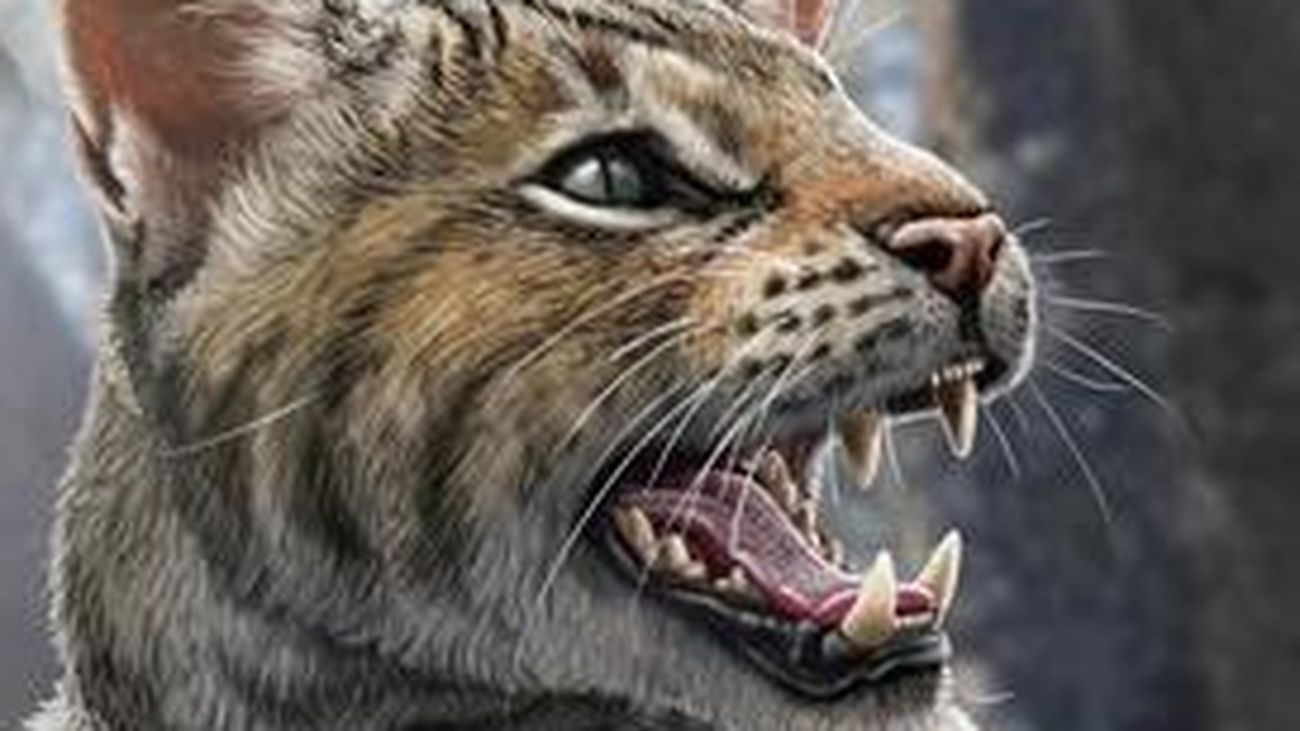A team of paleontologists from the MNCN-CSIC were surprised by the discovery of a feline unknown until now who lived in what is today Madridaround 15 million years ago, this ‘Madrid’ feline has been named Magerifelis peignei.
This discovery is crucial to understand the evolution of felinessince it constitutes a new form of feline until now unknown, with primitive dentition and a very robust jaw.
The name of the genus refers to the city of Madrid (founded as Magerit) followed by Felis (Latin for cat), while the species is dedicated to Stéphane Peigné, a French paleontologist who collaborated with the team for many years until his death in 2017.
The description has been made from a jaw that was recovered in 2007 in the paleontological site discovered during the improvement works of the transport interchange at the Príncipe Pío station in Madrid.
During the Miocene (between 20 and 5 million years ago) there lived a group of small felines whose kinship relationships are very little known due to the scarcity of fossil remains. In fact, until now only a few teeth and bone fragments were available.
“In 2007, an interesting paleontological site from the middle Miocene was discovered in Príncipe Pío. One of the most outstanding fossils of the recovered material was a jaw of a small feline, whose study we have just published in the Journal of Vertebrate Paleontology,” explains MNCN researcher Manuel Salesa.
An unknown feline from more than 15 million years ago
We recovered the practically complete jaw that preserved almost all of the dentition in an exceptional condition.
The most surprising thing is that it had a tiny second lower molar (m2), a tooth absent in all current and fossil felids except in Proailurus, the first felid known in the fossil record, from sites dating back 25 million years, much older. older than that of Príncipe Pío,” clarifies MNCN researcher Gema Siliceo.
According to paleoartist Mauricio Antón: “Thanks to the use of CT Scan, we have been able to study the internal morphology of these teeth and observed that m2 had a relatively large root.
The jaw is very robust when compared to that of felines of similar size, which suggests an adaptation to withstand great tensions during the bite, probably due to the capture of relatively large prey, says Salesa.
In addition to this resistance to tension, the muscles responsible for the bite have highly developed insertion areas, indicative of relatively larger muscle masses than those of other felines of similar size, continues the first signatory of the work.
Jesús Gamarra, who has carried out the reconstruction of what the species looked like in life, adds: “It is not common to have such a complete piece on which to work to reconstruct a fossil species, so it has been a very stimulating experience.
This feline lived in what is now Madrid
During the middle Miocene, about 15.5 million years ago, Madrid’s climate was warmer than today, and its landscape was dominated by extensive wooded meadows among which areas with more vegetation developed, in the form of forested patches where Numerous species of animals found refuge.
In that environment, a fauna developed among which ungulates of very different sizes abounded, such as Hispanotherium matritense, a rhinoceros with graceful limbs and dentition adapted to eating grass, so abundant at this time that these communities of mammals have been called “faunas with Hispanotherium”.
The herbivore species were completed by mastodons, paleomericids (deer-like ruminants), bovids, three-toed horses, and wild boars.
For their part, carnivores were represented by the super-predators of the moment, large ursids and amphiphonids (similar to dire wolves), along with ailurids (relatives of red pandas), mustelids, and small cats.
“It is vitally important to preserve the impressive paleontological heritage that Madrid treasures, one of the most important in Spain, and which provides essential data to understand the evolution of many groups of mammals,” says Jorge Morales, also from the MNCN.

